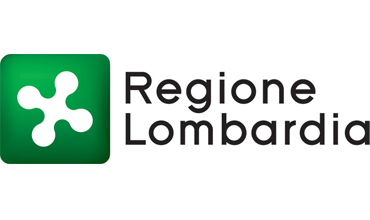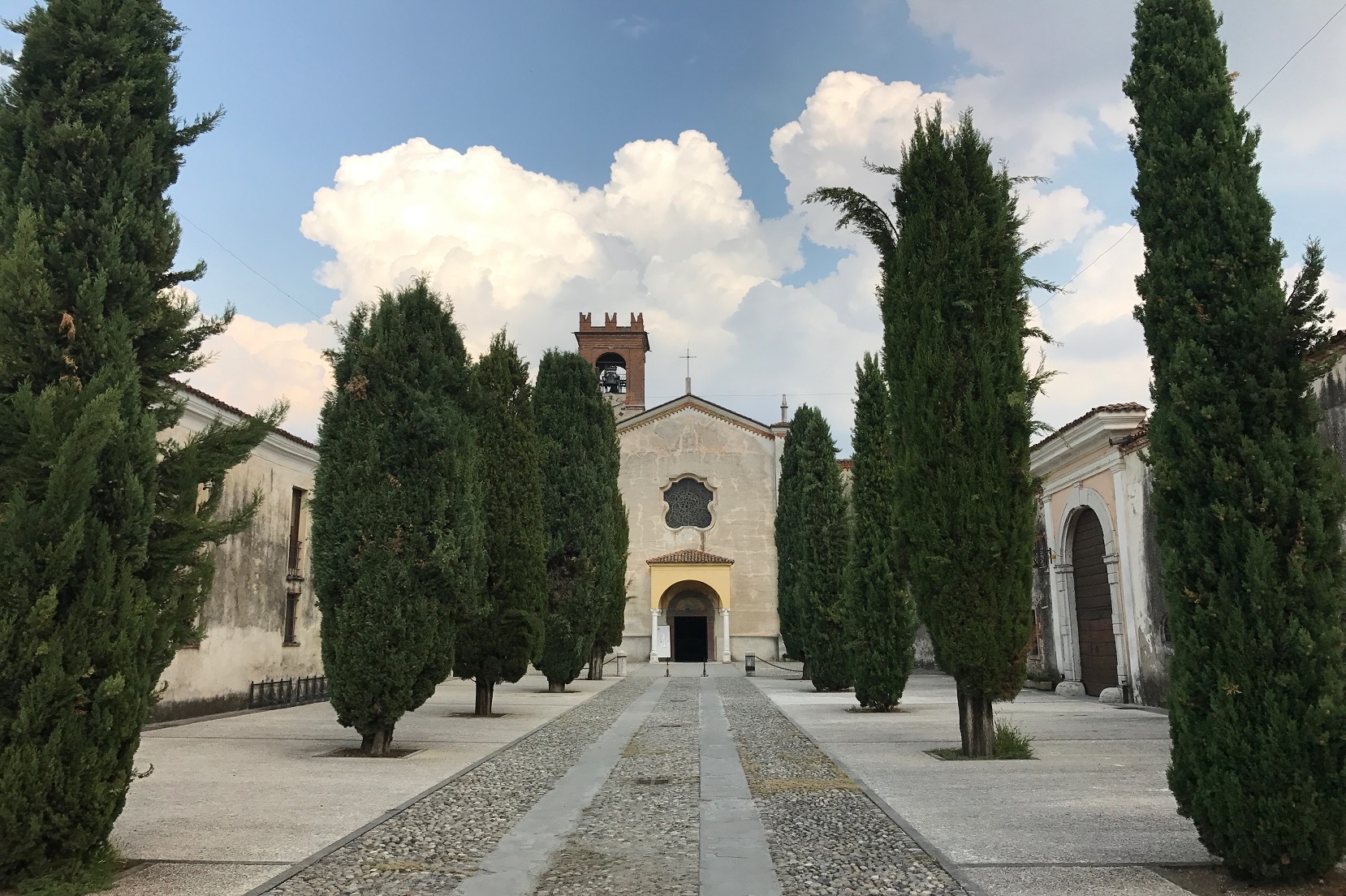An itinerary among hills populated by vineyards and places rich in art and history: the Cluniac road of Franciacorta winds between Brescia and Lake Iseo offering beautiful hilly landscapes, small stone villages, towers and medieval castles, sixteenth-century palaces and places of spirituality. The presence of Monks, since the Middle Ages, with their wise laboriousness, turned swampy and uncultivated lands into cultivated land, as it happened also in other parts of Italy. It was in fact thanks to their work that irrigation channels and water meadows in the plains, orchards and vineyards in the hills allowed this territory to take shape and develop little by little. This is the origin of the term "Franciacorta", which appears for the first time in 1277: the monastic courts were indeed rewarded for this extraordinary work becoming "francae curtes", that is "free courts", exempted from the payment of duties and taxes.
The Benedictine monks are linked to the fortune of the wine of these areas, the so-called "Franciacorta", whose history is linked to that of a Benedictine monk who, in 1600, introduced important improvements to wine production in these lands Dom Perignon
Along the way you will have many opportunities to taste local wines while visiting cellars. But the two unmissable stages concern two Cluniac sites considered among the most beautiful religious buildings in Italy: the Monastery of San Pietro in Lamosa in Provaglio di Iseo and The Olivetan Abbey of San Nicola in Rodengo Saiano.
The Monastery of San Pietro in Lamosa in Provaglio di Iseo (BS)
Near Lake Iseo, in a high position with respect to the village and overlooking the Natural reserve of "Torbiere del Sebino", stands the monastery of San Pietro, built in the middle of the year 1000 thanks to the donation of a small church to the monks of the abbey of Cluny by two brothers "of the Lombard nation", as they defined themselves. The beautiful Romanesque church has externally maintained the features of the past, while the interior has been transformed over the centuries, particularly between 1400 and 1500.
Today the religious complex consists of the church, with the cloister on the south side and the bell tower. The main nave ends with an apse choir flanked by two Baroque altars, inserted into two smaller apses. There are beautiful pillars and walls, partially covered with frescoes.
Among the most evocative spaces of the Monastery, there are the Hall of Discipline, with frescoes of the early sixteenth century with scenes of the Passion of Jesus, and a monumental Crucifixion that occupies the entire back wall.
At this link you can find information on accessibility.
From the monastery you can also appreciate the striking panorama on the Natural Reserve "Torbiere del Sebino", declared "wetland of international importance". Here the glaciers deposited the masses of debris that produced the concentric hill arches of Franciacorta, called "lame" (from which "Lamosa"). 10,000 years ago, when the last glacier retreated, the bottom of the innermost hilly circle remained flooded, and became a shallow basin of water with no outlet. A rich vegetation grew and decayed partially, giving rise to a layer of peat and, over time, this basin of water turned into a prairie with peat soil. This situation lasted for centuries, until, between the nineteenth and twentieth centuries, the peat deposit was removed to meet the increased need for energy and a basin of water of 350 hectares was recreated, divided into squares by grassy banks, that were the remains of the ancient prairie. Today this area is the home to numerous water birds and, due to its uniqueness and scenic beauty, it is protected as a nature reserve.
The Olivetan Abbey of San Nicola in Rodengo Saiano (BS)
Coming from Brescia, the first stop we recommend is the splendid Monastic complex founded by the Cluniac Benedictines: the recently restored Olivetan Abbey of San Nicola in Rodengo Saiano. The Abbey was built around 1050 on an important Roman crossroad that soon became a resting and refreshment place for pilgrims traveling to the Holy City. Four centuries later, in 1446, Pope Eugene IV entrusted it to the Olivetan Congregation, which rebuilt it . In 1534 the Monastery became an Abbey; it was restructured according to the Renaissance taste and embellished with works by famous painters. Suppressed by Napoleon in 1797, reduced to a state of degradation by frequent military occupation, thanks to Pope Paul VI the Abbey saw the return of the Olivetan monks in 1969.
Noteworthy are: the interior of the church, that was finely decorated between the 16th and 17th centuries; the chapels with 18th century paintings; the impressive Refectory hall; the magnificent 15th century Crucifixion fresco on the back wall, the library full of sacred texts and texts of art and the three elegant cloisters.
Before leaving, visit the shop where you can taste the spirits produced by the monks according to ancient recipes and you can also choose among products such as beer, honey, herbal teas, soaps, supplements and cosmetics, as well as texts and religious items. In addition, the monks organise courses of restoration of ancient books at the Abbey.
For information and details, please visit the website of the Abbey.
At this link you can find information on accessibility.
Sanctuary of the Madonna della Neve in Adro (BS)
About thirty kilometres away from the Monastery of St. Peter, stands the Sanctuary of the Madonna della Neve. Documents tell of a first church built in 1520 in the place where, a year before, the Virgin Mary appeared to a young deaf-mute shepherd, who told to the inhabitants of Adro about his vision and the request of the Virgin Mary to build a sanctuary.
In the eighteenth century, the project of the new Sanctuary was entrusted to Gaspare Turbini, a famous Lombard artist of the time, who completely transformed the original building into a centrally planted one, surmounted by an octagonal dome illuminated by eight windows. The interior of the church is worth a visit, both for the architecture as a whole and for the frescoes. In particular, to the left of the main altar you can admire the beautiful fresco dedicated to the apparition. The work is without date and author but it is roughly traced back to 1550, so very close to the facts told.
The Sanctuary houses the "Casa del Pellegrino," consisting of two large rooms and a chapel that allow the reception of organized groups for retreats, liturgical celebrations, cultural events.
Moreover, at the Sanctuary it is possible buy an excellent Franciacorta wine produced by the monks.
Here you can find information on the accessibility of the Sanctuary
Convento dell'Annunciata dei Frati Servi di Maria - Rovato (BS)
About ten kilometres from Adro, and about 3 Km from the Rovato train station, on the edge of Monte Orfano, is the Convento dell'Annunciata, where a community of friars of the Order of Servants of Mary live. Built in the mid-1400s and finished in the early 16th century with the consecration of the church, it was active until 1772, when the Republic of Venice suppressed the community, removed the friars and sold the church, the convent and the land. Only in 1960 the whole complex and the land became the property of the friars, who have lived there. The structure of the convent, which can be accessed through a small fifteenth-century loggia, is still the original one, articulated on two floors around a rectangular cloister.
Inside the church you can admire several frescoes depicting the Annunciation and scenes from the history of the Order of Servants of Mary.
In particular, between the presbytery area and the apse are concentrated the most important artistic works: the Annunciation by Romanino; a wooden Crucifix of 1400 made by an artist from the school of Donatello and a San Sebastiano attributed to Mantegna. Under the arch of the first chapel, then, you can admire the series of the Five minor prophets attributed to Liberale da Verona (1481).
For more information, please visit the website of the Convent
Here you can find information on the accessibility of the convent.
"Project carried out under the General program of intervention of the Lombardy Region, funded by the Ministry of Economic Development - 2015 Allocation".

